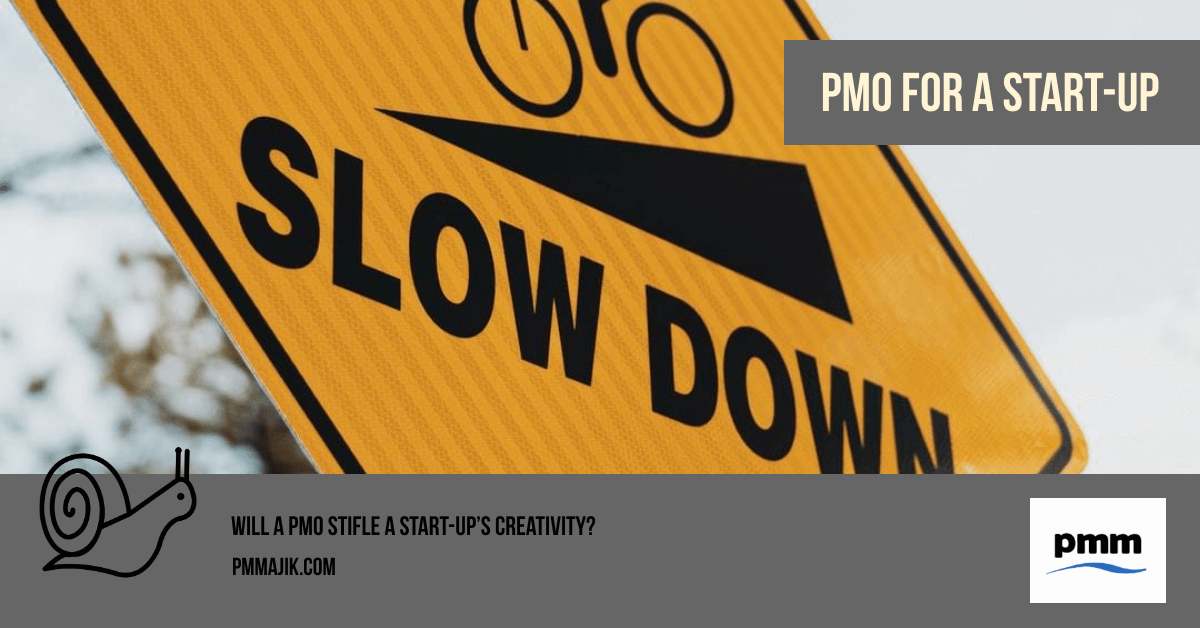Project management offices (PMOs) aren’t usually associated with start-ups. You’d expect a PMO in a corporation with clear project structures, data reports, and standardised procedures. Which of those would you not want for your start-up?
Start-up companies are seen as being dynamic and fast-paced, therefore it’s common to wonder, will a PMO stifle a start-up’s creativity? To clear that quandary up, we’re going to answer:
- Why are PMOs and start-ups seen as incompatible?
- How do I develop a PMO that’ll work for a start-up?
- What initial steps can I take to break in a PMO at a start-up?
So that you can be confident in launching your PMO in a start-up.
Does a PMO belong in a start-up?
The atmosphere and overall feel of a start-up company can be very different to large corporations. From management style to the overall aim of the company, there can be clear and sometimes subtle differences.
Here’s a run down of the things that make the company types different beasts:
| Start-up | Big business | |
| Speed | Fast-paced, products get to market quickly | Can take time for change to navigate processes |
| Company aim | Solves a clearly defined problem with a new product | Increase value of existing products |
| Risks | Takes risks to stand out in a market and identify USP | Generally risk averse |
| Creativity | Encouraged, structure lacks strong framework so fresh ideas get adopted easily | Channelled through appropriate procedures, ideas need sign-off across layers of management |
It can seem that a PMO is much less suited to a start-up.
However, it’s not going to be a small and punchy business forever. Businesses are developed to grow and a PMO can help make that happen.
What style of PMO will work in a start-up?
There are choices to make about the PMO you’re creating, such as waterfall or agile? Business-focussed or traditional? For an established company it might seem like an easy task, you’ll be there to solve a specific problem through a PMO.
In a start-up, it’s a different challenge to know which type of PMO to go for. It’s likely that there a few different issues, such as:
- Lack of financial control
- Duplicating work
- Poorly deployed talent
- Lack of oversight
These issues can be seen as a by-product of the dynamic and innovative environment. No one wants to deal with the paperwork when there’s a whole industry to take on.
You need to make a full assessment of what the company is trying to achieve and how its projects align with that goal. What’s the future of the company? Is it going for the scale-up and exit strategy, or are the founders in it for the long-haul? These issues will inform whether you need to focus on process or profit generation.
What’s vital is that you understand what makes the company good, and don’t try to change, contain, or process it too much. Work to create a PMO that fixes problems and also enables the positive culture.
What actions will help me establish a PMO in a start-up?
Once you’ve pitched your PMO to your C-suite sponsor, you need to gently ease your PMO into the company. It might feel tempting to show the same pace and energy and roll out your new PMO in one fell swoop.
With the negative opinion of PMOs held by many, you probably want to try a lighter, yet still vibrant, touch. Here’s three actions you can take to ease in your PMO without stifling creativity:
- Introduce a visual management tool such as a Kanban board. It’s an unobtrusive way to bring some structure that can be interactive for everyone.
- Roll out a new software system to get everyone on the same page. This will depend on what’s needed; a standardised communication tool such as Slack or Zoom could work.
- Put together a project plan so the start-up knows what’s complete, in process, and getting teed up. Giving project leaders and higher management a clear structure can even breed creativity and produce new ideas.
The take home
A PMO doesn’t need to be a stuffy, corporate structure. It’s not all about processing data, compiling reports, and requests for paperwork. A PMO can enable creativity rather than stifle it, and drive forward change so the start-up can continue to scale. Bring energy and the intention to make projects work better, rather than wanting to constrain them to a strict framework. When the CEO asks you “will a PMO stifle my start-up’s creativity?” you can confidently reply with a “no”.






